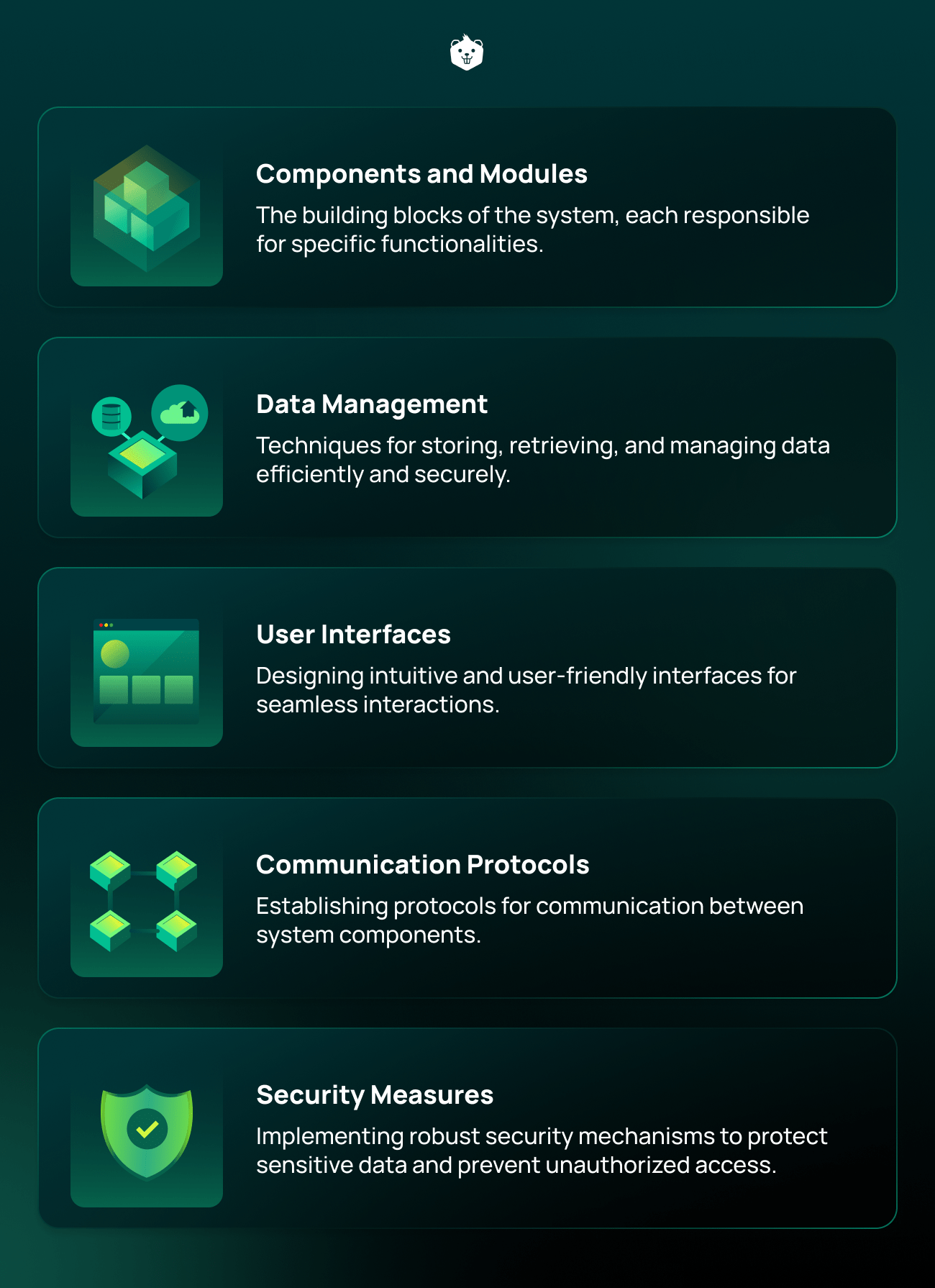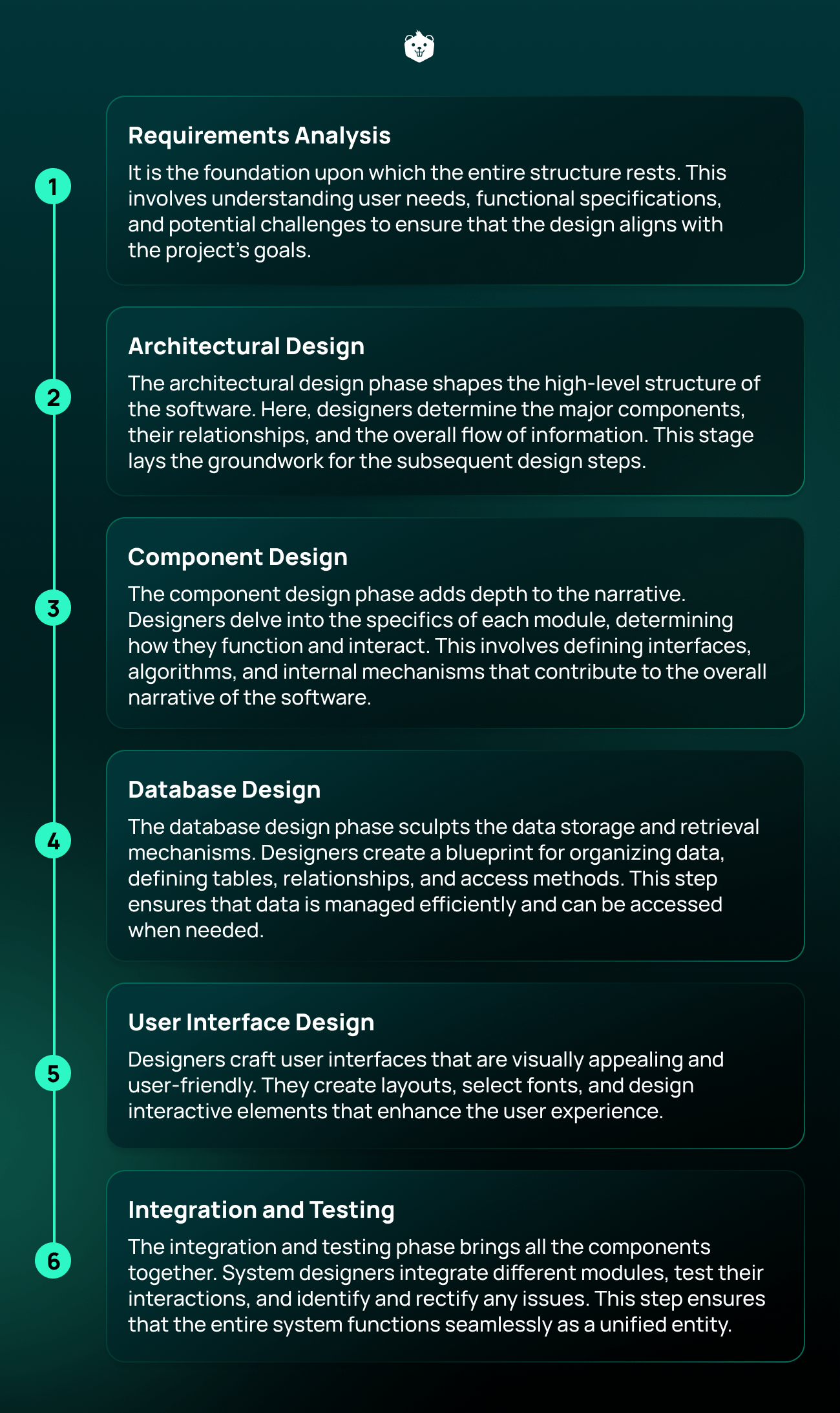In the dynamic landscape of software engineering, system design stands as a pivotal phase that lays the foundation for robust and scalable applications. Mastering the art of system design involves understanding intricate design concepts that fuel innovation and ensure seamless functionality. In this comprehensive guide, we'll delve into the world of system design, explore its core concepts, and equip you with the knowledge to excel in this crucial aspect of software engineering.
Table of Contents
- What is System Design
- Key Concepts in System Design
- Understanding the Components of System Design
- The Process of System Design
- Best Practices for Effective System Design
- Case Studies of Successful System Designs
- Conclusion
What is System Design
At its essence, system design is the blueprint that transforms concepts and requirements into tangible software structures. It is the strategic process of defining the architecture, components, and interactions of a software system to fulfill specific functional and non-functional requirements. It involves translating high-level concepts into concrete designs that can be implemented and executed efficiently.
Key Concepts in System Design
Modularity and Abstraction: Breaking down a complex system into modular components promotes reusability, ease of maintenance, and efficient collaboration among developers.
Coupling and Cohesion: Striking the right balance between component interdependence (coupling) and the functional relatedness within a component (cohesion) is crucial for a well-structured system.
Architectural Patterns: Different architectural patterns, such as client-server, microservices, and monolithic, offer guidelines for organizing components and handling interactions.
Data Flow and Communication: Designing effective data flow and communication mechanisms ensures seamless information exchange between system components.
Trade-offs and Constraints: System designers often face trade-offs between factors like performance, cost, and development time. Understanding these trade-offs is vital to making informed decisions.
Understanding the Components of System Design
A well-crafted software system is a composition of carefully crafted components, each serving a specific purpose and collaborating seamlessly to bring a digital vision to life. Every component is designed and precisely placed to ensure smooth operation and optimal performance. These components encompass a spectrum of functionalities, from managing data and user interactions to securing sensitive information and facilitating communication between different parts of the system.
Let's take a closer look at these fundamental components that form the backbone of a well-structured system design:

Components and Modules: Each component encapsulates a specific functionality, allowing for modularity and reusability. This means that developers can focus on refining and enhancing individual components without disrupting the entire system.
Data Management: Data management involves designing databases, defining schemas, and implementing strategies for data storage, retrieval, and maintenance. A well-designed data management component ensures that information flows seamlessly through the system, enabling accurate and timely decision-making.
User Interfaces: A user interface component involves creating intuitive, aesthetically pleasing, and user-friendly interfaces that facilitate smooth interactions. From buttons and menus to forms and visual elements, a well-designed user interface component enhances user experience, making it easy for users to navigate and engage with the application.
Communication Protocols: In a world where systems often need to talk to each other, communication protocols act as the language that enables effective dialogue. These protocols define the rules and conventions for data exchange between different components or even between separate systems. Whether it's a web service requesting information from a server or two modules sharing critical data, a robust communication protocol ensures that information is transmitted accurately and efficiently.
Security Measures: With the increasing importance of data privacy and cybersecurity, a dedicated security component is essential. This component encompasses encryption, authentication, access control, and other measures to safeguard sensitive information and prevent unauthorized access. A well-designed security component shields the software system from potential threats and vulnerabilities.
The Process of System Design
System design is a structured process that involves several stages. It involves a methodical process of conceptualization, refinement, and construction. This process serves as the blueprint for transforming abstract ideas into tangible and functional software systems.
Now, let's delve into the phases that constitute the process of system design:

Requirements Analysis: It is the foundation upon which the entire structure rests. This involves understanding user needs, functional specifications, and potential challenges to ensure that the design aligns with the project's goals.
Architectural Design: The architectural design phase shapes the high-level structure of the software. Here, designers determine the major components, their relationships, and the overall flow of information. This stage lays the groundwork for the subsequent design steps.
Component Design: The component design phase adds depth to the narrative. Designers delve into the specifics of each module, determining how they function and interact. This involves defining interfaces, algorithms, and internal mechanisms that contribute to the overall narrative of the software.
Database Design: The database design phase sculpts the data storage and retrieval mechanisms. Designers create a blueprint for organizing data, defining tables, relationships, and access methods. This step ensures that data is managed efficiently and can be accessed when needed.
User Interface Design: Designers craft user interfaces that are visually appealing and user-friendly. They create layouts, select fonts, and design interactive elements that enhance the user experience.
Integration and Testing: The integration and testing phase brings all the components together. System designers integrate different modules, test their interactions, and identify and rectify any issues. This step ensures that the entire system functions seamlessly as a unified entity.
Best Practices for Effective System Design
- Thoroughly understand user needs and requirements before diving into design.
- Create modular components to enhance reusability and maintainability.
- Maintain comprehensive documentation to aid understanding and future development.
- Develop prototypes to validate design concepts and gather user feedback.
- Keep It Simple. Strive for simplicity in design to reduce complexity and improve system clarity.
Case Studies of Successful System Designs
Let's dive into some fascinating real-world examples that showcase how the principles of system design have been applied to create impressive and impactful digital experiences. These case studies provide a glimpse into how thoughtful design choices can lead to revolutionary solutions and redefine entire industries.
Netflix Streaming Service
Netflix, the world's leading streaming platform, is a prime example of successful system design. Behind the scenes, Netflix uses a microservices-based architecture. Think of this as a city with different neighborhoods, each serving a unique purpose. These microservices allow Netflix to deliver content seamlessly to millions of users worldwide. Just like each neighborhood has its own shops and services, each microservice handles a specific task, like user authentication or video streaming. This modular approach ensures scalability, easy maintenance, and quick updates, contributing to the smooth streaming experience that millions enjoy daily.
Uber's Real-time Matching
Uber's success is built on a robust system design that enables real-time matching of drivers and riders. Imagine a magic matchmaking spell that instantly connects people needing a ride with available drivers. Uber's system uses advanced algorithms and location data to make this happen. It's like having a digital GPS guiding drivers to their passengers in real-time. This efficient system design ensures that users get reliable rides quickly, making urban transportation more convenient and accessible.
Amazon Web Services (AWS)
Amazon Web Services (AWS) is a game-changing example of system design in the cloud computing world. Imagine having a supercharged toolbox of digital tools and resources that you can access from anywhere. AWS provides this by offering a wide range of services, like storage, computing power, and databases, through the cloud. It's like having a virtual workshop where developers can build and deploy applications without worrying about the hardware. AWS's scalable and flexible system design has transformed how businesses manage their IT infrastructure, enabling startups and large enterprises alike to innovate and grow rapidly.
Conclusion
System design is the backbone of software engineering, shaping the way applications function, scale, and deliver value to users. By understanding the core concepts, following a systematic design process, and considering key factors, developers can create software systems that meet user expectations and adapt to changing technological landscapes. Learning system design empowers software engineers to craft innovative, reliable, and efficient solutions that drive the digital world forward.




